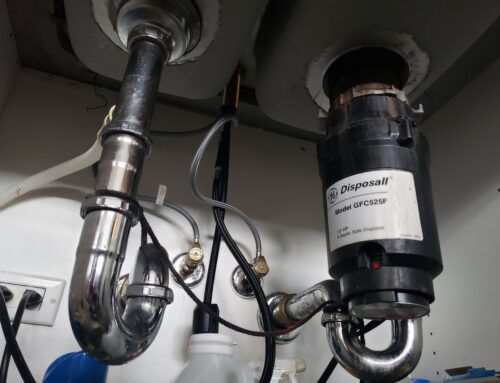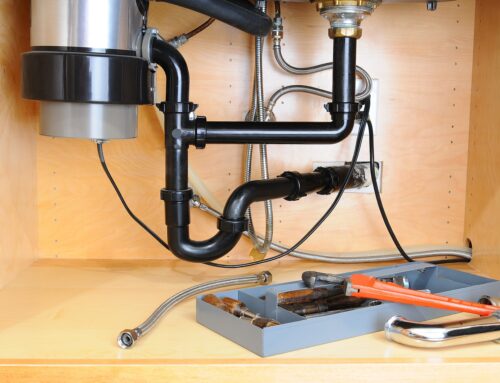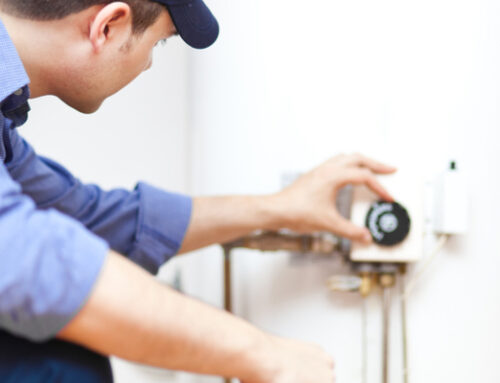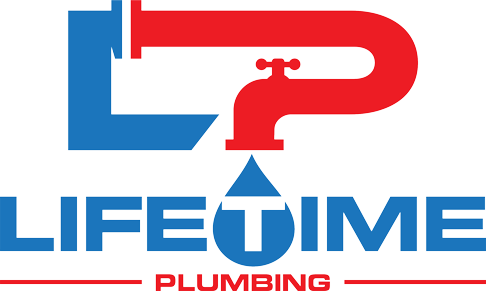Table of Contents
The 4 Most Common Faucets Types
A faucet is an essential plumbing fixture in both the kitchen and bathroom, allowing us to access water for various purposes. Whether it’s washing our hands, rinsing dishes, or filling up a pot, faucets play a crucial role in our daily routines.
However, with so many different types of faucets available on the market, it can be overwhelming to choose the right one for your needs.
In order to make an informed decision, it’s important to understand the different types of faucets and their respective pros and cons. Each type offers unique features and functionality that can greatly impact your overall experience.
By familiarizing yourself with these common faucet types, you can ensure that you select the one that best suits your needs.
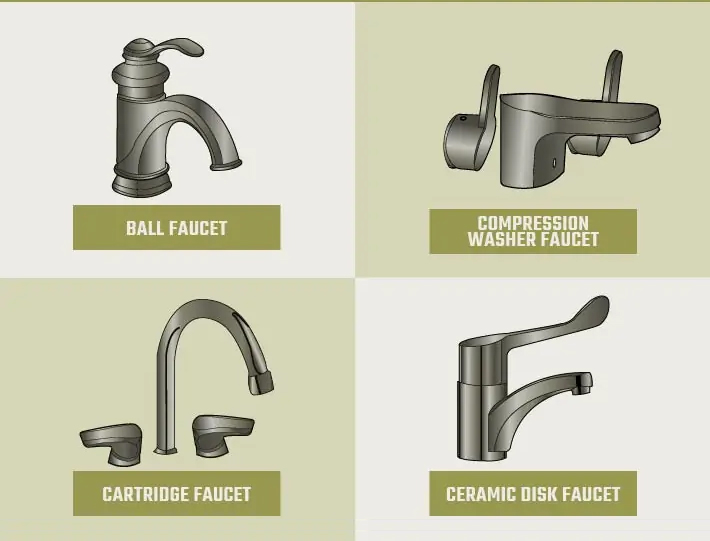
Ball Faucets
Overview of Ball Faucets
Ball faucets are one of the most common types found in many kitchens and bathrooms. They are recognizable by their single handle design, which allows for easy control of both water flow and temperature.
How Ball Faucets Work
The mechanism inside a ball faucet uses a ball bearing to control the flow and temperature of the water. As you turn the handle, the ball inside the faucet moves to align slots or chambers with the hot and cold water inlets, regulating the temperature and flow.
Pros of Ball Faucets
- Affordable Option: Ball faucets are often more budget-friendly compared to other types, making them a popular choice for many homeowners.
- Easy to Use with Single Handle Design: The single handle design of ball faucets makes them convenient and user-friendly, allowing for seamless adjustment of both water volume and temperature.
Cons of Ball Faucets
- Prone to Leaks: One drawback of ball faucets is that they are more likely to develop leaks over time, especially when the internal components wear out.
- Limited Style Variety: Another limitation is the relatively small range of styles available compared to other faucet types, which may limit design options for certain kitchen or bathroom aesthetics.
Disk Faucets
Disk faucets are another prevalent type commonly found in kitchens and bathrooms. These single lever faucets work by controlling both water volume and temperature with a sensitive touch, allowing for precise control. Their durable construction ensures long-lasting performance.
How Disk Faucets Work to Control Water Volume and Temperature
The disk faucet operates by using ceramic discs to regulate the flow of water. These discs move against each other to adjust the volume and temperature, providing smooth and accurate control.
Pros of Disk Faucets
- Sensitive touch for precise control: Disk faucets offer a responsive touch that allows for accurate adjustments, enhancing the user experience.
- Durable construction: The ceramic discs used in disk faucets are highly durable, ensuring long-term reliability and performance.
Cons of Disk Faucets
- Limited flow rate options: Some users may find the available flow rate options limited compared to other types of faucets.
- Potential for touch sensitivity issues: While the sensitive touch feature is a pro, it may lead to potential sensitivity issues if not properly maintained or if the faucet is exposed to certain environmental factors.
Cartridge Faucets
Cartridge faucets are commonly found in both kitchens and bathrooms. They offer smooth action and durability with their replaceable cartridges. Here are the pros and cons of cartridge faucets:
Pros of Cartridge Faucets
- Easy Cartridge Replacement: Cartridge faucets are known for their easy maintenance due to the replaceable cartridges, making it simple to fix any issues that may arise.
- Widespread Availability: These types of faucets are widely available, making it convenient to find replacement parts or new fixtures when needed.
Cons of Cartridge Faucets
- Higher Cost for Cartridge Replacements: While the cartridges provide ease of maintenance, they can come with a higher cost when replacements are necessary.
- Professional Repair for Valve Issues: In some cases, cartridge faucet problems may require professional repair, adding to the overall cost of maintenance.
Cartridge faucets offer a practical solution for those seeking a balance between ease of use and long-term durability.
Compression Washer Faucets
A compression washer faucet is the oldest type of valve mechanism, characterized by separate hot and cold handles for controlling water flow and temperature. The operation of a compression washer faucet relies on a compression stem with a rubber or neoprene washer that presses against the valve seat to stop the water flow.
Pros of Compression Washer Faucets:
- Inexpensive: Compression washer faucets are often more budget-friendly compared to other types of faucets, making them an attractive option for cost-conscious consumers.
- Classic design: These faucets offer a traditional and timeless look that can complement various kitchen and bathroom styles, adding a touch of classic elegance to the space.
Cons of Compression Washer Faucets:
- Prone to leaks: The rubber or neoprene washers in compression faucets are susceptible to wear and tear over time, leading to potential leaks and drips if not maintained properly.
- Less precise handle operation: The turning action of the handles in compression washer faucets may not provide as smooth and precise control over water flow and temperature compared to other modern faucet types.
The compression washer faucet’s simple design and affordability make it a popular choice for many homeowners. However, it’s essential to consider the potential maintenance requirements and the trade-off between cost and long-term performance when deciding on this type of faucet for your kitchen or bathroom.
Factors to Consider When Selecting a Type of Faucet
When choosing a faucet for your kitchen or bathroom, there are several important factors to keep in mind. These factors will help you make a smart decision based on your specific needs:
Style
Consider the overall look of your kitchen or bathroom and choose a faucet that matches the existing decor. There are many styles available, from modern and sleek designs to more traditional ones.
Functionality
Think about how you use the sink and what features would make your daily tasks easier. Here are some examples:
- If you often fill up large pots or buckets, look for a faucet with a high flow rate.
- If you frequently wash dishes by hand, consider getting a faucet with a pull-down sprayer for added convenience.
Budget
Decide how much you’re willing to spend on a new faucet and explore options within that price range. Keep in mind that while some faucets may cost more upfront, they could save you money in the long run due to their durability and efficiency.
Durability
Check the materials used in the construction of the faucet. Look for options that are known for being durable, corrosion-resistant, and able to withstand regular use without wearing out quickly.
Installation
Think about whether you’ll be installing the faucet yourself or hiring a professional to do it for you. Some faucets come with easy-to-follow instructions for DIY installation, while others may require expert assistance.
By considering these factors carefully, you can choose a faucet that not only works well for your needs but also adds to the overall appearance of your kitchen or bathroom.
Related: How to fix a dripping faucet, Faucet Parts Diagram
Matching Faucets to Sink Configurations
When choosing a faucet, it’s crucial to consider the specific configuration of your sink to ensure a seamless and functional match. Here are some tips for ensuring compatibility between different types of faucets and sink setups:
Number of Holes
Take note of the number of mounting holes in your sink, as this will determine the type of faucet you can install. Common configurations include:
- Single-hole faucets
- 4-inch center set faucets
- 8-inch widespread faucets
Handle Configuration
Consider whether you want a single-handle or double-handle faucet based on your sink’s pre-drilled holes:
- Single-handle faucets are ideal for sinks with one pre-drilled hole
- Double-handle faucets require three holes
Spout Reach and Height
Assess the size of your sink and the distance between the faucet holes and the basin. This will help you determine the appropriate spout reach and height to ensure:
- Adequate water coverage
- Without splashing
Sprayer Options
If you’re considering a kitchen faucet with a pull-out or pull-down sprayer, ensure that your sink has sufficient space and clearance to accommodate the additional features.
By carefully matching your faucet to your sink configuration, you can achieve both practical functionality and aesthetic harmony in your kitchen or bathroom.
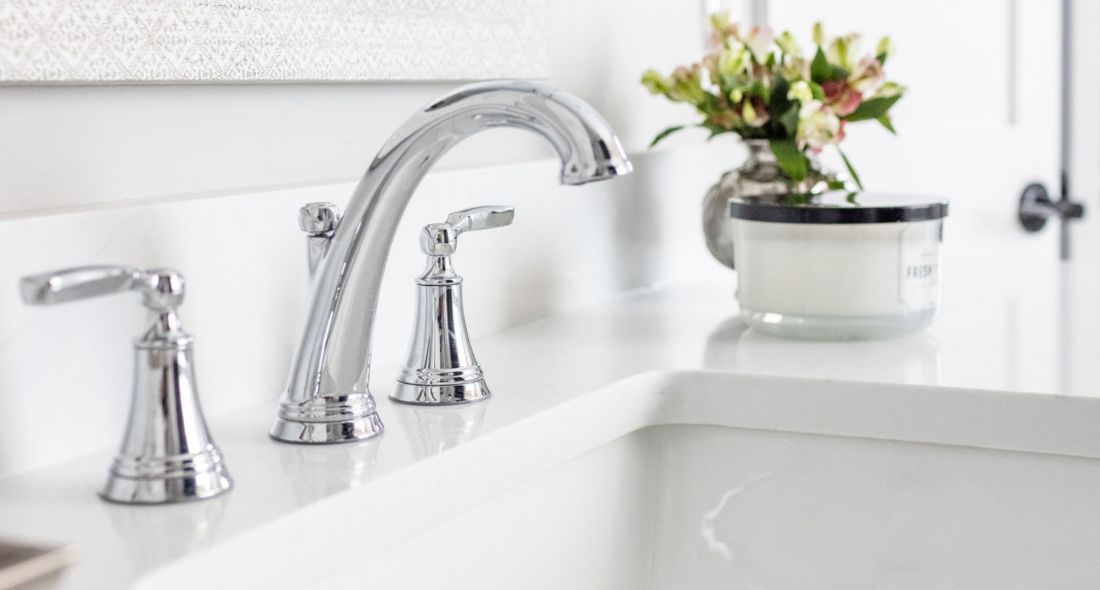
Faucet Types: Conclusion
Choosing the right faucet is crucial for both functionality and aesthetics in your kitchen or bathroom. Here are some final thoughts on this important decision:
- Functionality: A suitable faucet can make your daily tasks easier, like washing dishes or taking care of personal hygiene. It should be convenient to use, while an ill-fitting faucet can cause problems.
- Aesthetics: Your faucet is a key part of your kitchen or bathroom’s look, and its design can greatly affect the whole space. Picking a faucet that matches your overall decor can make your area more stylish.
- Long-Term Implications: When choosing a faucet, you should think about things like how long it will last, how much maintenance it needs, and if there might be any repair issues. Making a smart choice now can save you trouble and money later on.
The process of selecting a suitable faucet is not just about practicality. It also plays a big role in how your living spaces feel on a daily basis.
Why choose Lifetime Plumbing
When it comes to selecting and maintaining the right faucet for your kitchen or bathroom, it’s important to have expert guidance and reliable services. That’s where Lifetime Plumbing comes in.
- Expert advice: Consult with our professional plumbers who have extensive knowledge and experience with a wide range of faucet types. We can provide you with valuable insights and recommendations tailored to your specific needs.
- Quality installations: Trust Lifetime Plumbing for top-notch installations that ensure your new faucet is properly integrated into your sink configuration. Our skilled plumbers in Chicago will ensure a perfect fit and optimal performance.
- Reliable repairs: If you encounter any issues with your faucet, rely on Lifetime Plumbing for prompt and effective repairs. Our team is equipped with the expertise to diagnose problems accurately and provide long-lasting solutions.
Don’t compromise on the functionality and aesthetics of your kitchen or bathroom by settling for subpar plumbing services. Contact Lifetime Plumbing for your Faucet Installation and Repair Services in the Chicago and surropuning areas.

